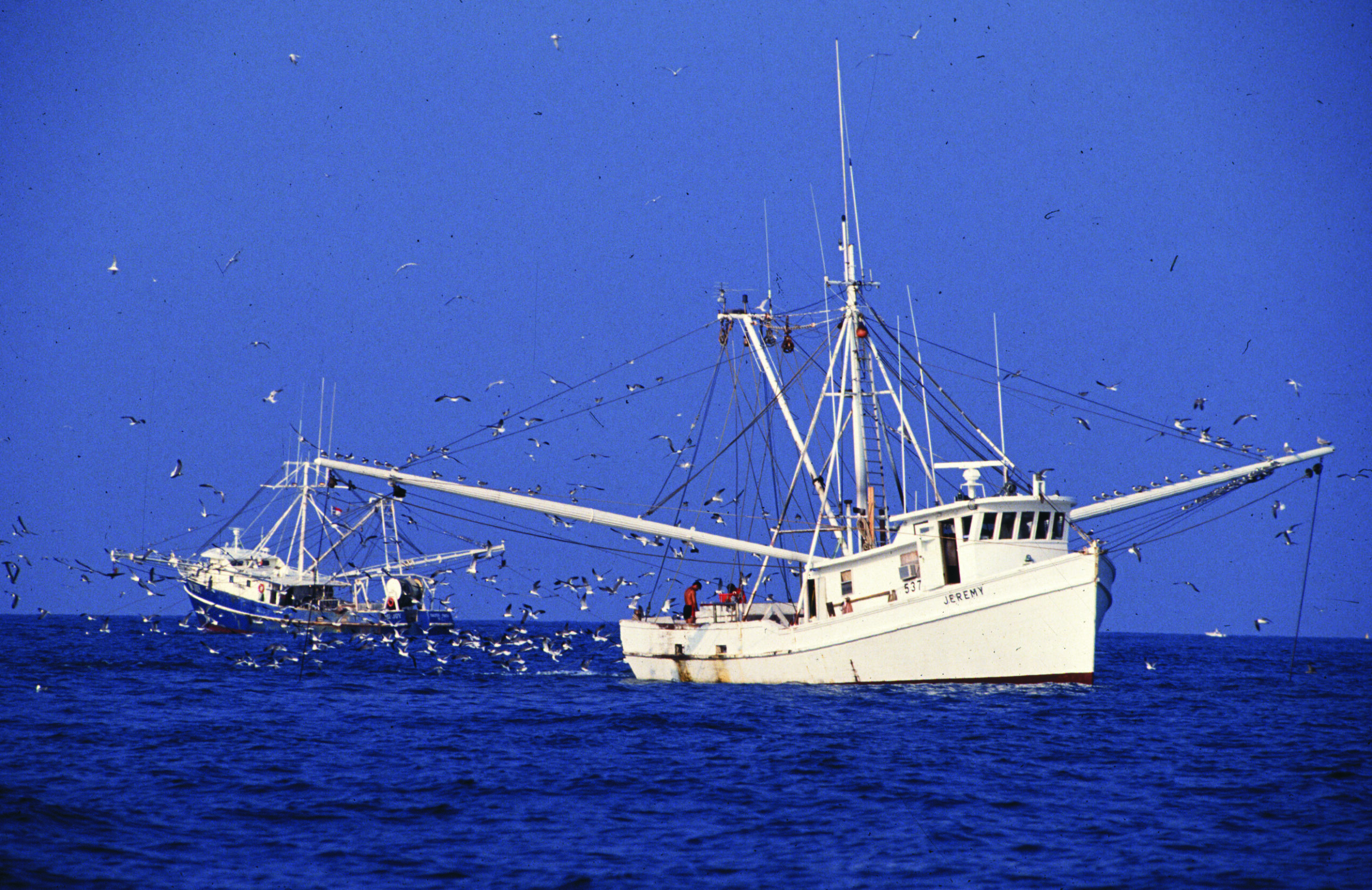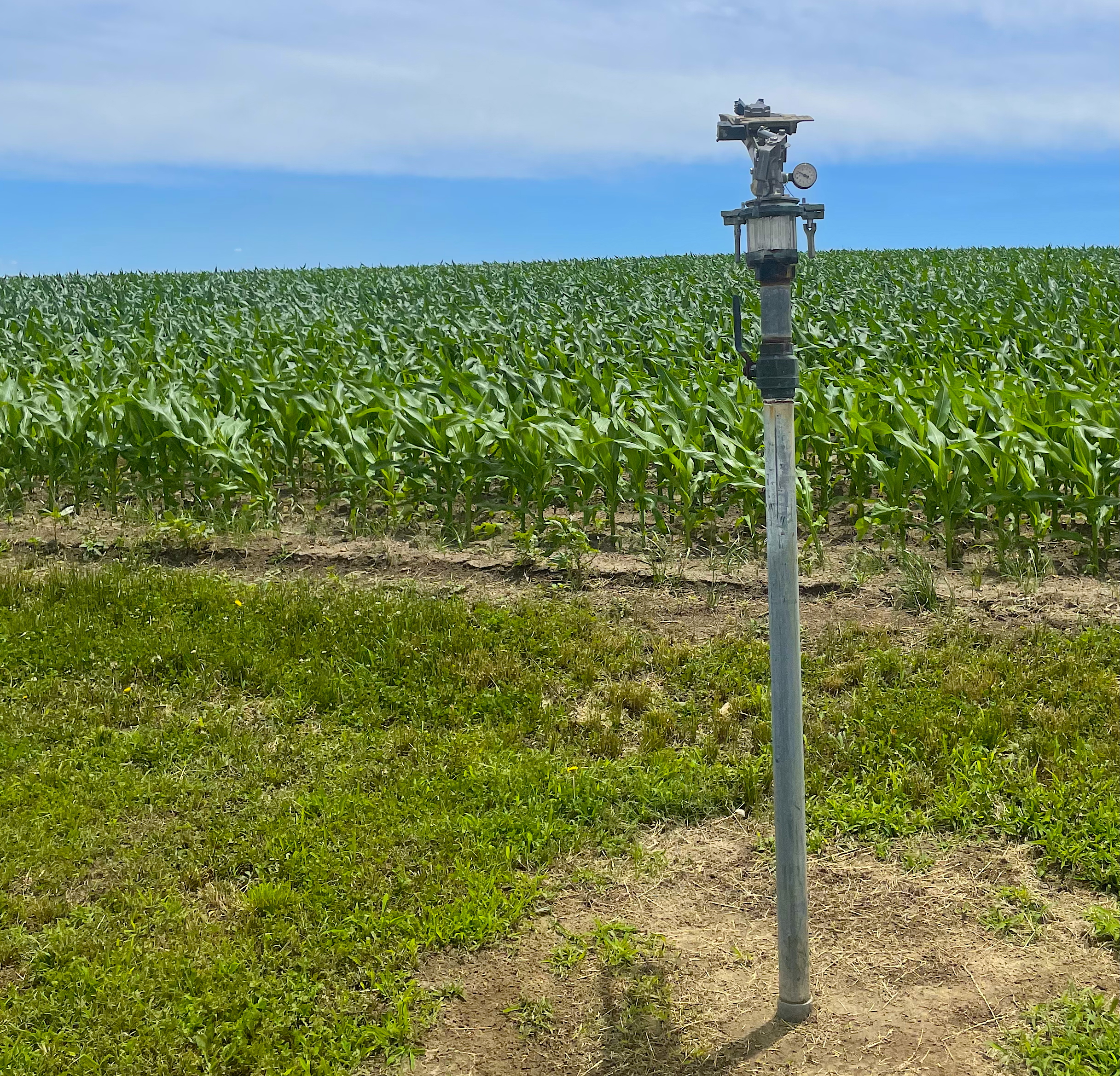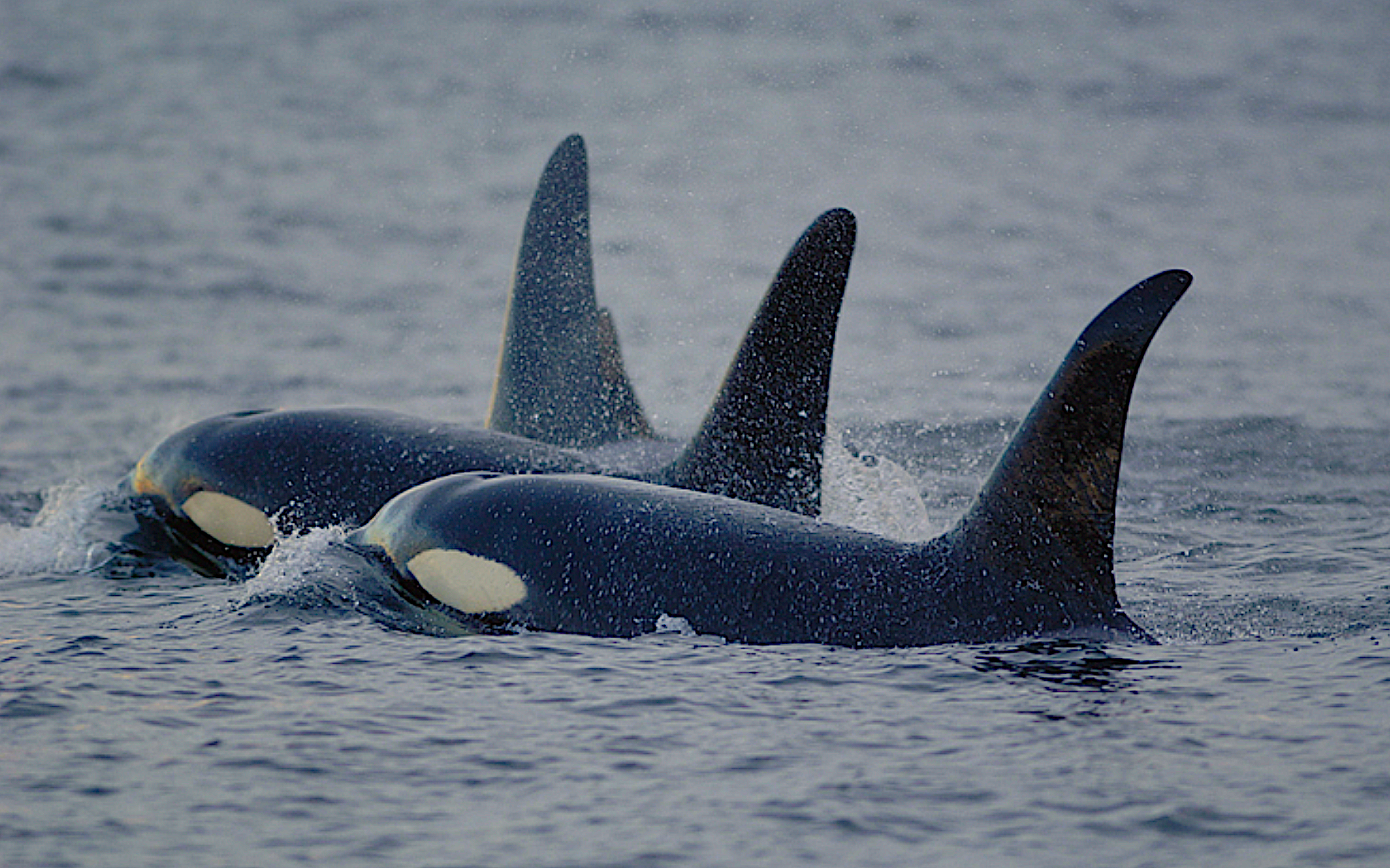Shrimp Economics: Coastal Tradition and Global Economy Converge

Ocean creatures have provided a way of life for the Hopkins family for many generations. “This is my heritage,” explains Glenn Hopkins, who lives in the small, Pamlico County shrimping town of Vandemere. “This is what my dad, and my granddad, and my great-granddad did. I was born and raised into this.”
But, times are changing along the coast. As domestic shrimp prices plummet to compete with imported supplies, and the cost of gas and insurance continue to rise, Hopkins and other North Carolina shrimpers are struggling to maintain tradition.
Hopkins has known no other life. By the time he was 6 years old, he was going out with his dad on their trawler. The boat was an entertaining place for the curious youth — he would cause all sorts of trouble talking on the radio and playing with his dad’s catch.
Now he recalls watching his dad work. “It just seemed natural, like what you were supposed to do. There’s no other way to describe it.”
It wasn’t long before Hopkins was going out on his dad’s boat by himself. And not long after that he had his own boat — a 25-foot schooner — on which he still prefers to work solo.
Why?
Freedom.
“It’s the freedom of being out on the water by yourself, doing your own thing, making your own way,” says Hopkins.
For that reason, Hopkins continues crabbing and shrimping — not because it pays the bills. He drives a gas truck in the winter to make ends meet
“I don’t want to do it no more, but I have to,” laments Hopkins, who has tried to find a better job to no avail.
Last spring Hopkins sat in the lobby of a nursing home. He was there to apply for a maintenance job. Hopkins, who never finished high school, was told that the three people who applied in front of him had college degrees. Hopkins, frustrated and discouraged, turned in a blank application and went home.
Daunting Issues
What challenges do shrimpers like Hopkins face? The issue is complicated, but industry and government officials often point to the global economy that brings increasing amounts of imported shrimp to the United States.
“We are not a player in the market anymore,” says Doug Cross, co-owner of Pamlico Packing. “The days of being able to compete on a commodity level are over.”
Shrimp consumption in the United States has almost tripled since 1980, and imports have accommodated the expansion in the market, according to a report by the Trade Adjustment Assistance for Farmers (TAA) program.
A survey conducted by the National Fisheries Institute (NFT) indicates that for the first time in 2002, American consumption of shrimp, at 4 pounds per person, exceeded canned tuna consumption, at 3.1 pounds per person.
To meet consumer demands, shrimp imports not only have been part of the U.S. market, but also have dominated for more than two decades. An unprecedented increase in the supply of imported shrimp occurred between 2001 and 2003 — such that foreign shrimp now account for 90 percent of the market, according to the TAA report.
Several factors — mainly an increase in European Union tariffs and food safety requirements, along with a weak U.S. dollar — caused shrimp exporters all over the world to become more focused on the U.S. market, says Scott Baker, a North Carolina Sea Grant fisheries specialist based in Wilmington.
When adjusted for inflation, shrimp prices are at a 30-year low, according to statistics from the N.C. Division of Marine Fisheries (DMF). The dock price in 2001 of $2.27 per pound adjusts to only 53 cents per pound in 1972 dollars. By 2003, the price dropped even farther — $1.77 per pound dockside or 40 cents per pound in 1972 dollars.
While he cannot statistically prove that the increase in foreign shrimp directly caused the domestic price to drop, it certainly looks like a primary factor, says Brian Cheuvront, a DMF economist.
Lagging Supplies
The majority of shrimp imports are farm-raised, whereas most domestic shrimp are wild-caught.
Imported farm-raised shrimp are desired in some market sectors because of the uniformity of the product and its consistent availability. As domestic catches often are subject to nature’s whims, the U.S. market is simply unable to offer a competitive product on an international scale, says DMF Director Preston Pate.
“You can order popcorn shrimp at Red Lobster,” Pate explains. ‘And when you get your dinner, it’s 30 little shrimp — and they are all exactly the same size.”
International competitors also have the economic advantage of low production and labor costs, according to South Atlantic Fishery Management Council fisheries anthropologist Kathi Kitner.
Many shrimpers in the South Atlantic and Gulf of Mexico find it is not cost effective to fuel up their boats, repair their nets and go out on the water, Kitner adds. Other costs, including insurance and boat maintenance also are on the rise.
Markets and restaurants have been able to make profits as wholesale shrimp prices have dropped, but prices to the consumer stay steady, according to Cheuvront. Thus, domestic shrimpers have felt the brunt of the price drop impact.
But others are affected by rising costs as well.
Fish markets, packers and restaurants face high property taxes on their prime waterfront property, Kitner explains. As more people move to the coastal regions, the cost of real estate rises. In turn, the property taxes increase. Many fisheries-related business owners on the waterfronts seriously consider offers that they are receiving for their property.
Here in North Carolina, Cross has received inquiries about his property from developers of marinas and condominiums. Potential buyers are not looking for the business, but rather for the land. “There is no doubt that the land we sit on is worth more for other applications, but as of now I haven’t accepted any offers,” Cross says.
Keeping Afloat
The future of North Carolina shrimping is not all grim. People like Cross and those at DMF and Sea Grant are exploring solutions to the difficulties facing the industry. Several plans are already in the works.
hi response to falling prices, Congress allocated $35 million in disaster relief for U.S. shrimpers in February 2004. The TAA program, which was approved by the U.S. Department of Agriculture (USDA) Foreign Agricultural Service, provided monetary relief for North Carolina shrimpers — 5 cents per pound harvested in 2002 for those who could prove that they were economically impacted by the increased imports.
About 900 North Carolina commercial shrimpers sold their catches in 2002, but only about 90 met the initial TAA requirements, applied and attended workshops. Even fewer met final reviews to receive the assistance.
The TAA program also provided free training for the participants. Organized in North Carolina by Sea Grant, the training program gave an overview of the world market, along with general business education to assist shrimpers in dealing with recent changes — how to address problems, cut costs or possibly exit the business if they choose.
The North Carolina shrimp fishery also has been certified for the TAA program for shrimp landings in 2003. Now individual shrimpers must reapply for the new round of assistance by mid-February.
On another front, in January 2004 the Southern Shrimp Alliance (SSA) filed a petition to federal regulators accusing six large exporting countries of illegal “dumping” on the shrimp market. That includes imports that are sold substantially below market price or are given price advantages through foreign government subsidies.
The SSA petition is especially important because it has turned into the largest trade action in American history, says Kenny Lewis, North Carolina representative to the SSA Board of Directors.
The International Trade Commission (ITC) can impose tariffs on countries that they find to be in violation of anti-dumping provisions of U.S. trade law. Responding to the SSA petition, the ITC ruled that the U.S. shrimp industry has been harmed by imports. The final ruling, expected in mid-January, could result in shrimp import tariffs.
If tariffs are imposed, Lewis anticipates importers likely will absorb most of the cost.
The tariffs would cause shrimp prices to stabilize during the next few years, to just above current levels, Cross says. “It will not offer permanent relief. Some see it as the savior of the industry, but it isn’t. Other things have to be done if this industry is going to survive.”
Finding a Niche
So what does Cross suggest be done? “We have to reinvent the wheel on marketing,” he says, adding that shrimpers must be willing to help market their product on a consistent supply and price basis.
As Pate sees it, most of the imports are fairly low-value, small shrimp, while the strength of North Carolina shrimp lies in the taste, quality and size.
For that reason, North Carolina shrimp could be marketed towards higher quality, niche markets — such as high-end restaurants and caterers. To reach these markets, shrimpers and processors are looking at ways to provide specialized and “value-added” products to the consumer.
The overall goal is to increase the visibility of — and an interest in — local products, says Barry Nash, Sea Grant seafood technologist. “Market research indicates that consumers want to buy locally grown foods and are willing to pay a premium for regional commodities if these products satisfy consumers’ expectations for quality, consistency, healthfulness, taste appeal or uniqueness,” Nash explains.
There are several programs in the works that will address quality and consistency.
A “Mark of Quality” program has been proposed as a cooperative effort among Sea Grant professionals in eight southeastern states with viable shrimp industries. The program would establish quantifiable quality standards.
“The standards would include measures for product attributes such as piece size, salinity, water content, aroma, appearance, flavor and color,” Nash explains. “The program’s objective would be to harness measurable quality standards that reinforce a recognizable brand image for wild-caught shrimp — similar to what has been done for the Vidalia Onion or the Angus Beef marketing programs.”
North Carolina Sea Grant specialists also hope to work with local captains and processors to test the handling methods advocated by the TAA curriculum for enhancing the quality of shrimp at the time of harvest.
They are developing a proposal to compare batch-process handling methods recommended by the TAA program to conventional on-board handling and product transportation techniques. The batches would be evaluated by a trained panel who would look for statistically significant sensory differences between the two handling regimes.
If results indicate that the quality of wild-caught shrimp can be enhanced with improved handling practices, the next step would be to access its price potential in the marketplace. If shrimp perceived as higher quality can command a higher price than farm-raised shrimp, North Carolina shrimpers would realize greater revenue for their harvests, Nash explains.
North Carolina Sea Grant also is participating in a community-based seafood branding effort, where restaurants in Carteret County will be encouraged to buy — and highlight on their menus — a variety of locally caught seafood, including shrimp. The project is funded in part by a Rural Community College Initiative grant from Carteret Community College and support from North Carolina Sea Grant.
“The project team comprised of community volunteers is working to establish a group of local fishermen, dealers and restaurants who will develop a business relationship to sell and promote local seafood commodities,” Nash says.
Future Prospects
Many shrimpers along the North Carolina coast wfll fight for their livelihood — fitting into whatever niche market here or value-added product there that they can, all the while holding out hope that things will get better.
Others are not so sure. Glenn Hopkins doesn’t expect his traditional livelihood will continue for his children, who were just youngsters when they first came on his boat. “They could swim before they could walk,” he recalls. Yet, he doesn’t want them to go into the family business because there’s “no future in it.”
Doug Cross believes that the next generation of shrimpers will have to be willing to adapt and change. So, too, will the processors.
Cross already has adjusted to the new marketplace by developing value-added product lines and looking for niche marketing opportunities. Yet, he doesn’t anticipate his children will take over the business.
“It has sustained me, but it will not sustain them,” he says. “There is no Forrest Gump’ story” for the North Carolina shrimping industry, he adds.
Part of the cultural heritage of the East Coast may be dying as people and industries struggle to meet the demands of a global economy.
“Some consider the changes on the coast progress,” Cross says. “Part of me hates to see it go, but part of me knows it’s inevitable.”
This article was published in the Winter 2005 issue of Coastwatch.
For contact information and reprint requests, visit ncseagrant.ncsu.edu/coastwatch/contact/.
- Categories:


